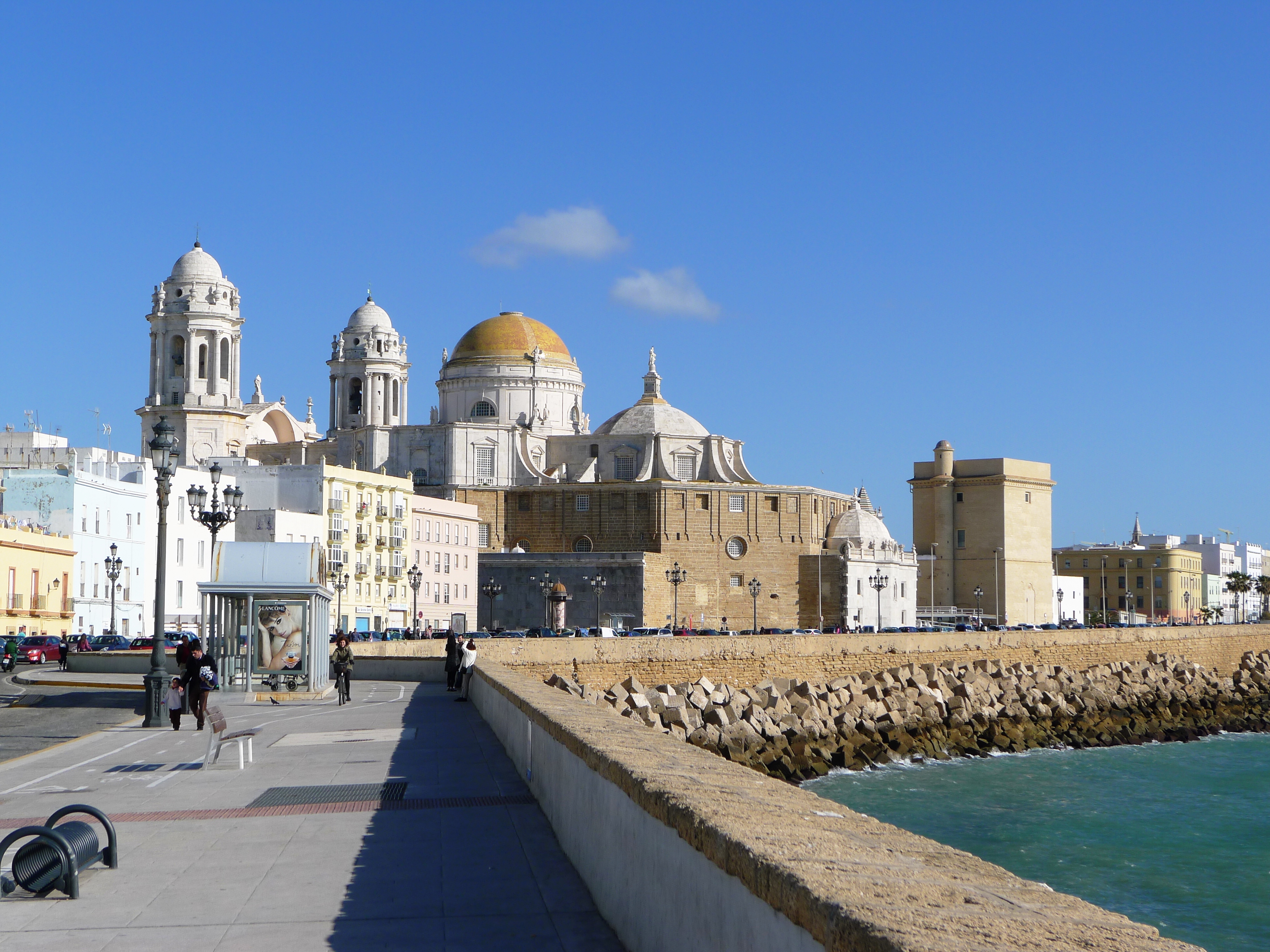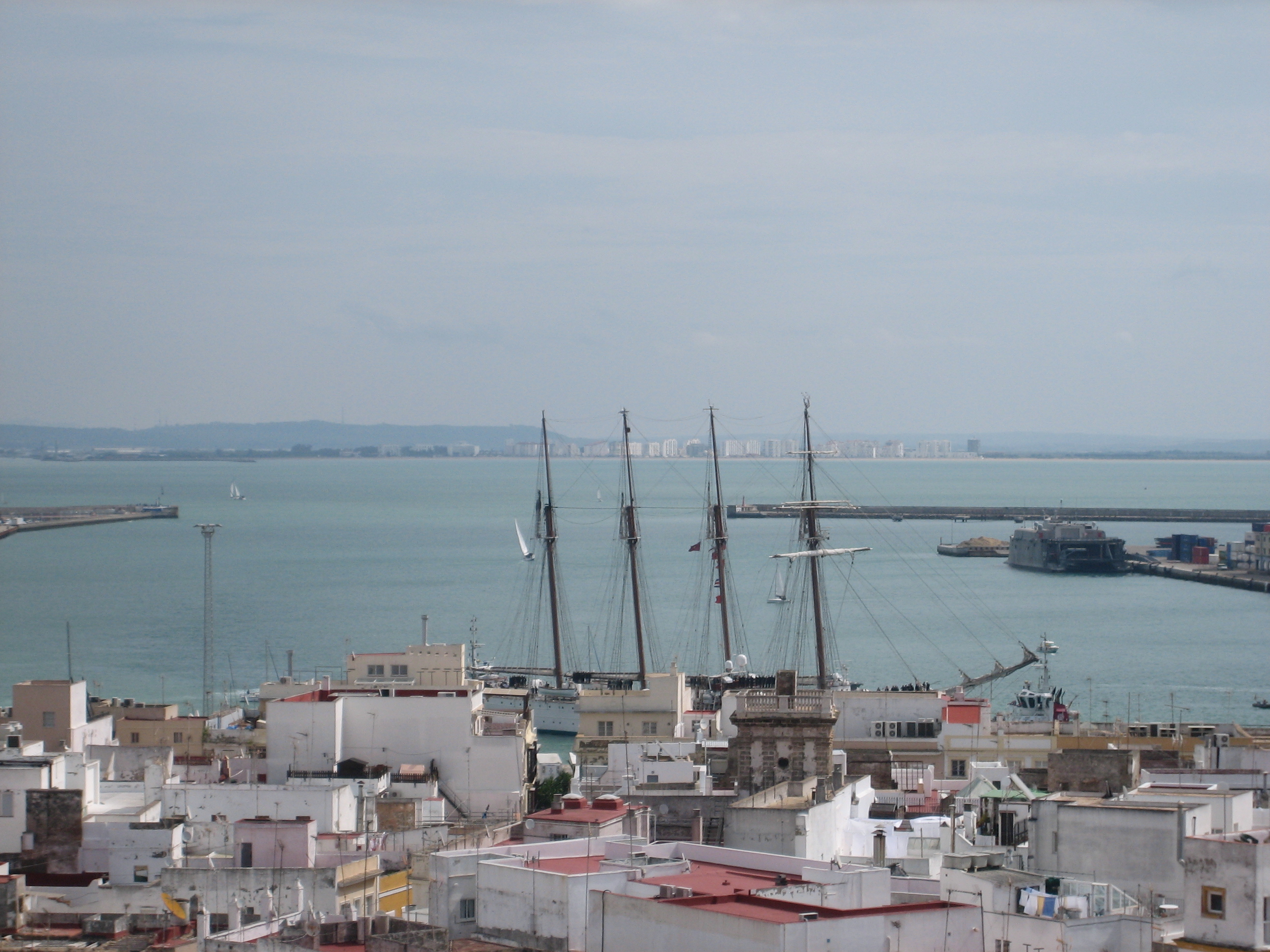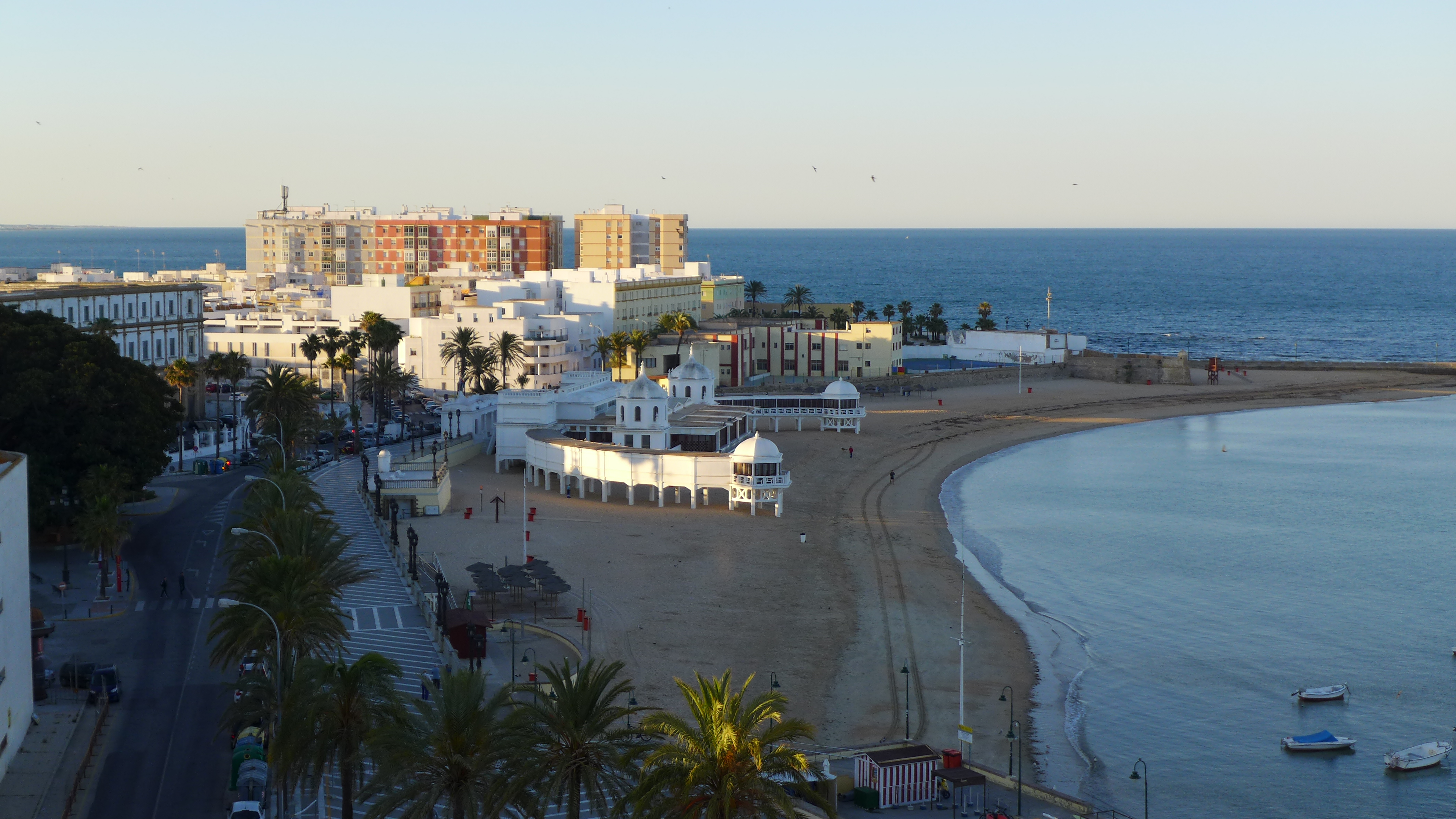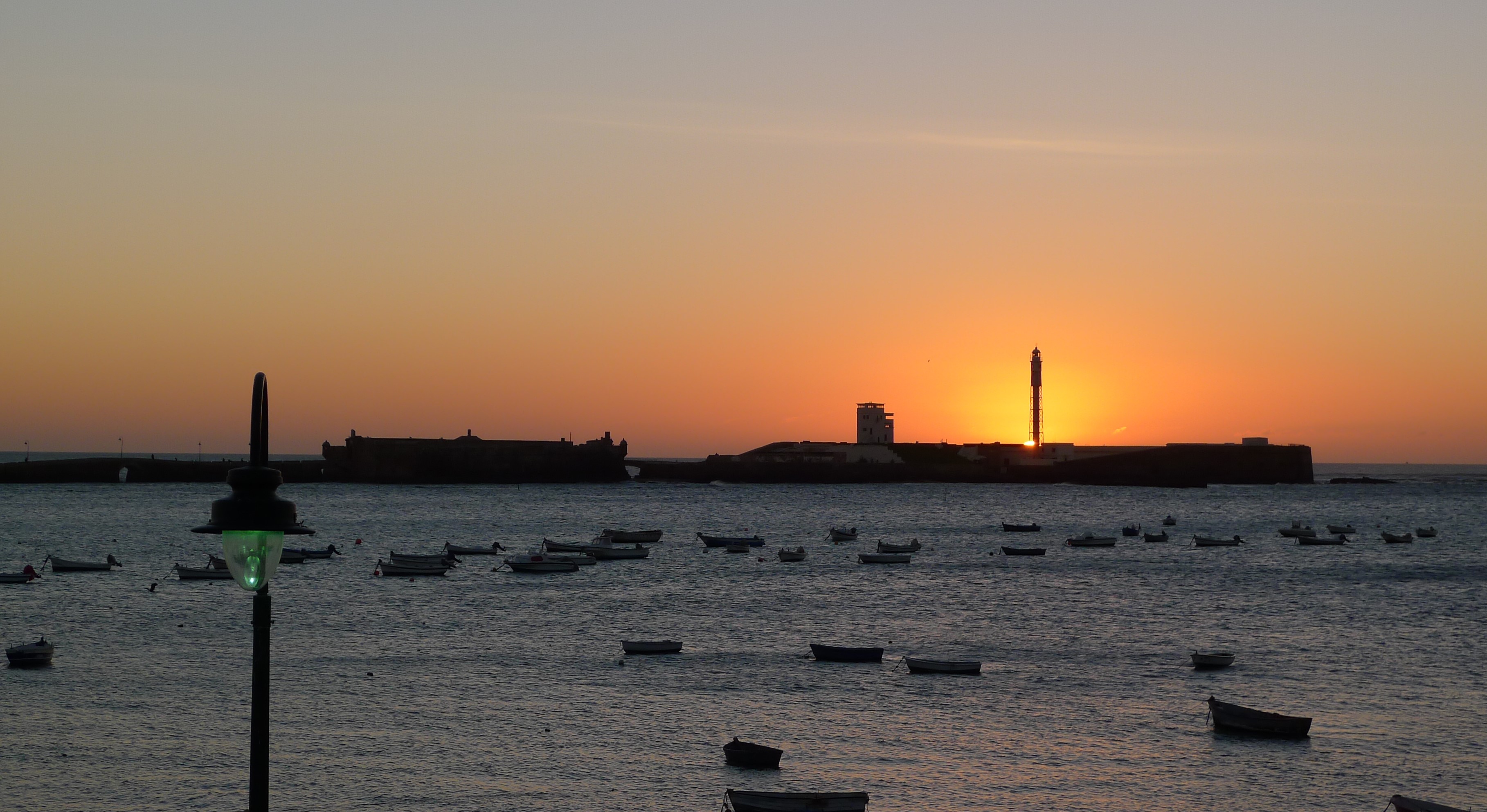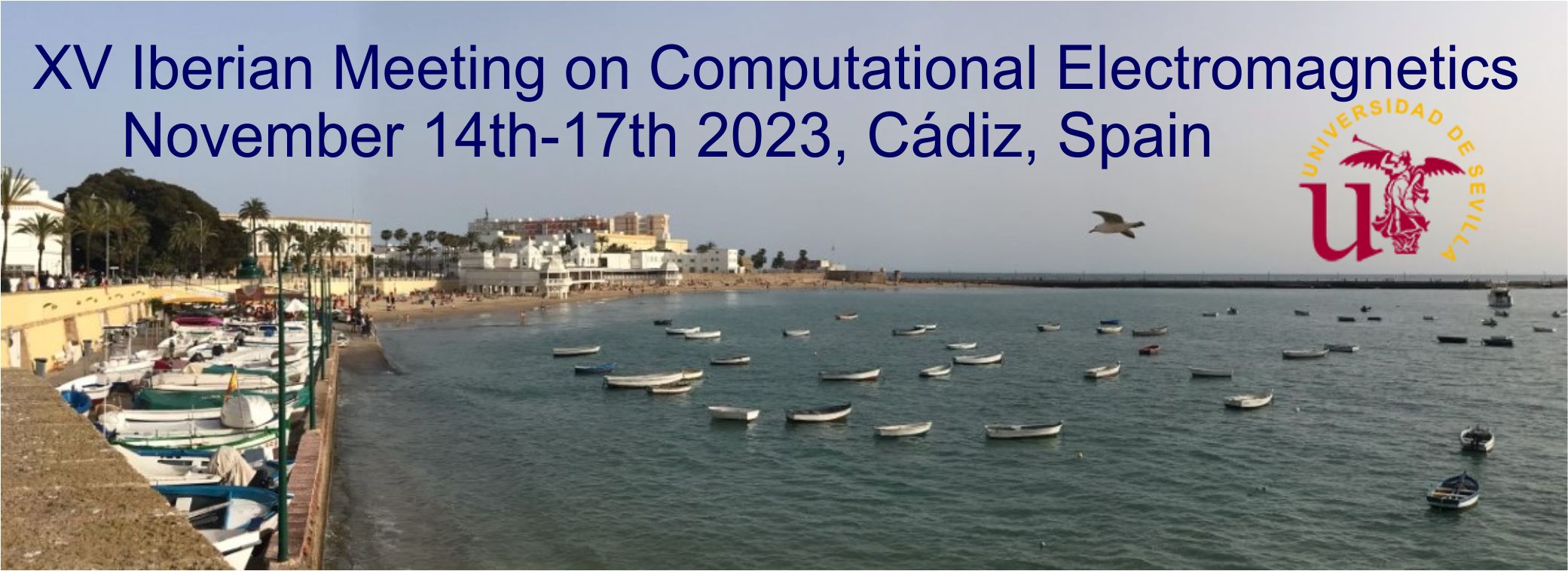

Cádiz is both a city and a port in southwestern Spain. It is the capital of the province of Cádiz, which is one of the eight provinces that make up the autonomous community of Andalucía.
Founded as Gadir or Agadir by Phoenicians from Tyre, Cádiz is often regarded as the most ancient city still standing in Western Europe (the port was established in 7th century BC, but archeological remains from 9th century BC have been found). The city fell under the sway of Carthage during Hamilcar Barca's Iberian campaign after the First Punic War (3rd century BC). Later on, the city fell to Romans under Scipio Africanus in 206 BC. The overthrow of Roman power in Hispania Baetica by the Visigoths in the 400s saw the destruction of the original city, of which there remain a few remnants today. Under Moorish rule between 711 and 1262, the city was called Qādis, whence the modern Spanish name was derived. The Moors were ousted by Alphonso X of Castile in 1262. During the Age of Exploration, the city experienced a renaissance. Christopher Columbus sailed from Cádiz on his second and fourth voyages, and the city later became the home port of the Spanish treasure fleet. Consequently, it became a major target of Spanish enemies suffering English raids in 1587, 1596, 1625, 1655 and 1702. In the 18th century, the Port in the Bay of Cádiz consolidated as the main harbor of mainland Spain, enjoying the virtual monopoly of trade with the Americas until 1778. In the pensinsular war (1808-1814) against Napoleon (also known as War of Independence in Spain), it was one of the few Spanish cities to hold out against the invading French and their candidate Joseph Bonaparte. Cádiz then became the seat of Spain's military high command and “Cortes” (parliament) for the duration of the war. It was here that the liberal Spanish Constitution of 1812 was proclaimed. In 1868, Cádiz was once again the seat of a revolution, resulting in the eventual abdication and exile of Queen Isabella II. The “Cortes” of Cádiz decided to reinstate the monarchy under King Amadeo just two years later. Nowadays, Cádiz is a typical Andalusian city with well-preserved historical landmarks and superb beaches that attract tourists all through the year thanks to its mild weather.
Cádiz holds interesting monuments in the historical city center, which is separated from the modern expansion by the city walls (also called “las Puertas de Tierra”). Among the many interesting landmarks to visit in Cádiz, we should highlight: the Cathedral keeping in its crypt the tomb of Manuel de Falla (one of the best music composers in Spanish history), the “Oratorio de San Felipe Neri” where the first Spanish Constitution was signed in 1812, the Cádiz Museum of Fine Arts and Archaeology containing two Phoenician tombs more than 2500 years old and an impressive statue of the Roman Emperor Trajan (born in Spain) dated from the 2nd century AD, and finally, the “Oratorio de la Santa Cueva” keeping inside three paintings of the famous Spanish romantic painter Francisco de Goya. Another must-see in Cádiz is the market, which is located in a building nearly two hundred years old. It contains one of the largest varieties of fish and sea-food you can find in an atlantic market in Spain.
One of the main touristic attractions of Cádiz are its beaches: “La Caleta”, “Santa María del Mar”, “La Victoria”, “Cortadura”, “El Chato” and “Torregorda”. If we add the length of all the beaches, we will find more than eight kilometers of fine white sand beaches facing the Atlantic Ocean. Some of them (“La Caleta” and “La Victoria”) have been awarded a blue flag award by the European Union for its high standards of cleanliness and facilities for public bathers. “La Caleta” is specially acclaimed by Cádiz dwellers for its charm, and it has been repeatedly mentioned in the sentimental songs composed for the most important playful event of the year in Cádiz: the “winter Carnival”.
Gastronomy is another attraction in Cádiz as in any other Spanish town. Since Cádiz is a coastal town and a fishermen’s port, its gastronomy is based on fish and sea-food. The most typical dishes are: stew of tuna and onions (“atún encebollado”), stew of cuttles and potatoes (“papas con chocos”), grilled mackerel and grilled sardines with tomato/green pepper/onion salad (“caballas o sardinas con piriñaca”), rice with scarlet shrimps (“arroz con carabineros”), and finally, the appreciated deep fried pancakes with small prawns (“tortillitas de camarones”). These delicacies can be tasted in the most famous restaurants of Cádiz.
